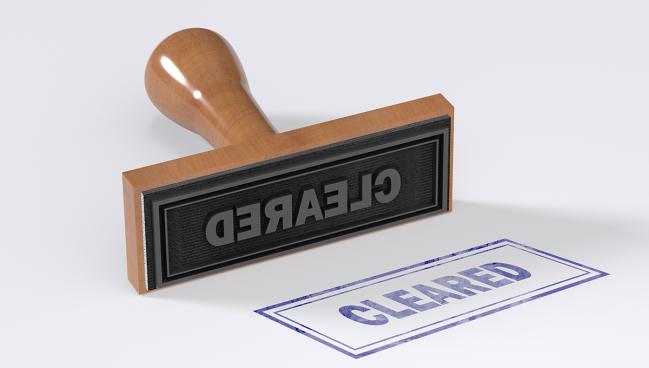Medical Devices Cleared on Faulty Predicates More Likely to be Recalled
Cardiology devices were among the most common to have passed through a problematic regulatory loophole.

While the loophole isn’t new—the Institute of Medicine (IOM) raised an array of concerns about the 510(k) pathway more than a decade ago—the data show that devices approved on the basis of a previously authorized device that had been subject to a class 1 recall are at a significantly higher risk of a subsequent class 1 recall, report investigators.
Better safeguards are needed to prevent problematic devices from getting to market without proper safety evaluations, they say.
“The pathway is well intentioned,” lead investigator on one of the papers, Kushal T. Kadakia, MSc (Harvard Medical School, Boston, MA), told TCTMD. The 510(k) process is typically a swifter process than the stricter premarket approval (PMA) process, intended to fuel iterative innovation to better help patients. “But this is an example where there is a clear issue in how the law was written that is causing patients harm, and we believe that Congress should take action on it,” he said.
A second study evaluating various devices cleared via the 510(k) pathway also highlighted safety concerns when using predicate devices that had been recalled. In that analysis, applicant devices that used predicates with ongoing manufacturer-initiated recalls had a 14% higher relative risk of later recall compared other approved devices.
By law, the FDA does not allow previously approved predicate devices to form the basis of a new 510(k) clearance if that device has been subjected to a mandatory FDA-initiated recall. The problem is that most devices are not recalled by the FDA itself.
“We can count on less than one hand the number of times the FDA has issued a voluntary recall of a medical device,” said Kadakia. “The dominant paradigm is that manufacturers usually issue recalls. Within that 510(k) pathway, there is no prohibition on manufacturer-initiated recalls of devices and those devices being used as predicates for future devices. That’s what we call the ‘recall-predicate’ loophole.”
Rita Redberg, MD (University of California, San Francisco), who has previously criticized the 510(k) pathway, called the new results “disturbing,” but added that safety concerns raised here have been discussed for more than a decade. In fact, after the FDA asked the IOM, which is now the National Academy of Medicine, to evaluate the 510(k) process, they recommended it be scrapped.
“That report concluded that the 510(k) process should be abandoned because there was absolutely no way it could ensure safety and effectiveness,” Redberg told TCTMD.
More than 10 years on, though, the FDA continues to allow devices to market under the 510(k) provision. According to one report, 99% of medical devices receive clearance via the 510(k) pathway, with roughly 3,000 devices cleared annually. In contrast, the FDA evaluates approximately 30 medical devices per year as part of the more-rigorous PMA process.
“Its use has really proliferated, where it is now the dominant pathway by which medical devices in the United States receive FDA authorization,” said Kadakia, a second-year medical student. “The issue is that because it’s meant to facilitate incremental innovation, 510(k) is not in itself an assessment of safety and effectiveness.”
The bottom line, said Kadakia, is that recalled devices shouldn’t be used to authorize new devices. “To me, that’s not an example of innovation,” he said.
In total, nearly 30% of the recalled devices were in the cardiovascular space. “Cardiology is a field where device innovation has been wholly transformative for the standard of care and for patient outcomes,” said Kadakia. “That’s something that we want to encourage. But these devices can pose some risk to patients. As a future clinician myself, I would want patients to know what the risks are with these devices.”
History of the 510(k) Pathway
Higher-risk devices (class 3) require clinical data and undergo the more-rigorous PMA process, but moderate-risk devices (class 2) are reviewed only to determine if they are “substantially equivalent” to already-cleared products. The 510(k) pathway is the primary route to market for class 2 devices, although some high-risk class 3 devices are cleared via this pathway, with clearance based on the assumption that any difference between the new device and the predicate is limited in scope and function and that the predicate device is safe and effective.
In their study, published in the January 10, 2023, issue of JAMA, Kadakia and colleagues focused on 156 medical devices approved via the 510(k) pathway that were subjected to a class 1 recall between 2017 and 2021. Class 1 recalls occur when there is the possibility that use of the device or product will result in serious adverse health consequences or death. Roughly 10,000 units were recalled globally with each index recall.
The recalled devices were used in cardiology (29.5%), anesthesiology (20.5%), general hospital practice (18.0%), neurology (10.3%), and general/plastic surgery (5.1%), and included a range of products, the most common being infusion pumps, neurological stereotaxic equipment, and noncontinuous ventilators. More than 10% of devices were designated life-sustaining or support and 7.1% were implanted devices. As part of the 510(k) application, just nine devices included any clinical data, with 119 products not undergoing any clinical testing.
Of the 156 medical devices cleared and later subject to a class 1 recall, information about the predicate device was not available for 29 products. Of the remaining 127 index devices citing predicates, 56 (44.1%) were approved using predicate devices that had been subjected to a class 1 recall.
In total, 229 unique predicate devices supported the approval of the 156 devices, but just 4.4% of predicate devices had undergone any premarket clinical testing. Strikingly, some new devices were approved via the 510(k) pathway even while the predicate device’s class 1 recall was still ongoing, report investigators.
In a matched analysis, medical devices approved based on a predicate device that was subject to a class 1 recall were more than six times more likely to also undergo a class 1 recall when compared with devices approved based on recall-free predicates (RR 6.40; 95% CI 3.59 to 11.40).
In the second JAMA study looking at the same issue, researchers studied the association between different characteristics of predicate medical devices and the probability of recall with their descendants. Led by Alexander Everhart, PhD (Harvard Medical School), researchers analyzed more than 35,000 devices cleared via the 510(k) pathway between 2003 and 2020. Of the applicant devices, 4.3% cited predicates with one ongoing class 1 or 2 recall, 1.0% cited devices with two ongoing recalls, and 0.8% cited devices with three ongoing recalls.
In total, 11% of the descendant devices were later recalled (class 1 and 2). Applicant devices that used predicates with ongoing recalls had a higher relative risk of recall compared with the mean. Additionally, citing more predicate devices as part of the 510(k) process was associated with a higher relative risk of the descendant device being recalled. Interestingly, citing an older predicate was associated with a lower relative risk of recall.
The latter finding is a bit of a paradox, but the researchers suggest the older devices may have withstood the test of time. “A manufacturer citing an older predicate medical device may have a more-complete understanding of safety issues with the predicate medical device and thus the applicant device, such that recalls of the applicant device are less likely,” write Everhart and colleagues.
Not a Hard Loophole to Close
The assumptions underpinning the 510(k) pathway—that changes from the predicate are limited and that the prior authorization provides assurances for safety and effectiveness—simply don’t hold up, as the present study shows, according to Redberg.
Broadly speaking, clinical anecdotes abound about devices substantially altered from a predicate, or those that have undergone multiple modifications over the years, but were approved anyway. Ten years ago, Redberg, along with Brent Ardaugh, MPH (Boston University School of Medicine, MA), and Stephen Graves, MBBS (Flinders University, Adelaide, Australia), documented problems with DePuy’s ASR XL hip replacement, a 510(k)-cleared device that could be traced back more than 50 years through 95 different iterations. The device was recalled worldwide in 2010 because of a high rate of revision surgery.
“It raises the question about why nothing has been done about this,” she said. “It’s not a new problem.”
The FDA has stated there is a need to modernize the 510(k) pathway. In 2019, they proposed a safety and performance-based pathway with “well-understood device types” using FDA-identified performance criteria to show a new product is as safe and effective as a legally marketed device.
Kadakia stressed the current issue isn’t that the FDA isn’t doing its job—the problem is with the legislation that allows recalled devices to form the basis of a new 510(k) clearance. “There is no opportunity for the FDA to even consider this question,” he said.
Following the IOM report in 2011, Senator Edward Markey (D-MA) introduced the SOUND Devices Act, a bill that would have closed the loophole by not allowing 510(k) clearance of any device if the predicate had been previously recalled by the manufacturer. The bill was never signed into law.
While medical device regulation can be complex, fixing this problem isn’t difficult, said Kadakia. Although they are the first to systematically study the risks associated with the loophole, they’re not the first to discover it. “There are some regulatory issues that are really hard [to fix], but this is not one of them,” he said.
In an editorial, Daniel Kramer, MD, MPH, and Robert Yeh, MD, MSc (both Beth Israel Deaconess Medical Center, Boston), point out that closing the loophole alone isn’t going to address all of the concerns raised about the 510(k) pathway. With the FDA’s proposed safety- and performance-based pathway, for example, there are going to be more questions about which devices are eligible as well as needed efforts on the part of “industry, regulators, and academia to create the scientific evidence and clinical consensus required to establish these criteria,” write Kramer and Yeh.
Michael O’Riordan is the Managing Editor for TCTMD. He completed his undergraduate degrees at Queen’s University in Kingston, ON, and…
Read Full BioSources
Kadakia KT, Dhruva SS, Caraballo C, et al. Use of recalled devices in new device authorizations under the US Food and Drug Administration’s 510(k) pathway and risk of subsequent recalls. JAMA. 2023;329:136-143.
Everhart AO, Sen S, Stern AD, et al. Association between regulatory submission characteristics and recalls of medical devices receiving 510(k) clearance. JAMA. 2023;329:144-156.
Kramer DB, Yeh RW. Quantitative analyses of regulatory policies for medical devices: matching the methods to the moment. JAMA. 2023;Epub ahead of print.
Disclosures
- Kadakia and Redberg report no relevant conflicts of interest.
- Everhart reports prior employment with Medtronic and personal fees from the Digital Medicine Society and the University of Southern California. He reports grant funding from the Agency for Healthcare Research and Quality, the National Institute on Aging, and the National Bureau of Economic Research.
- Yeh reports grants from Abbott Vascular, Bard, Boston Scientific, Cook, Medtronic, Philips, and the FDA. Yeh is a special government employee of the FDA and a voting member of the FDA’s circulatory systems devices advisory panel. He reports consulting for Abbott Vascular, Boston Scientific, CathWorks, Elixir Medical, Medtronic, Shockwave, and Zoll.
- Kramer reports consulting to the FDA’s circulatory systems devices advisory panel, HeartcoR Solutions, and Firefly Health.





Comments